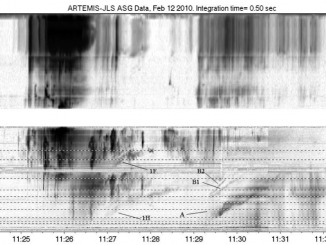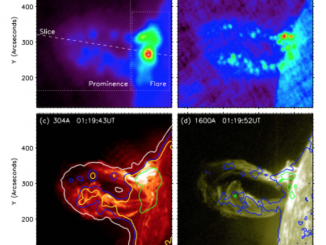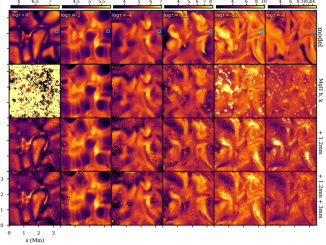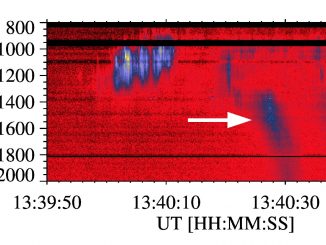Energetics of compressive waves in the solar corona by Francesco Azzollini et al
Inelastic scattering off moving or oscillating density fluctuations leads to broadening of radio signals propagating in the solar corona and solar wind. Using an anisotropic density fluctuation model from the kinetic scattering theory for solar radio bursts, we deduce the plasma velocities (perpendicular to the line of sight) required to explain observations of spacecraft signal frequency broadening. The kinetic energy associated with these inferred bulk velocities cascades to smaller and […]






